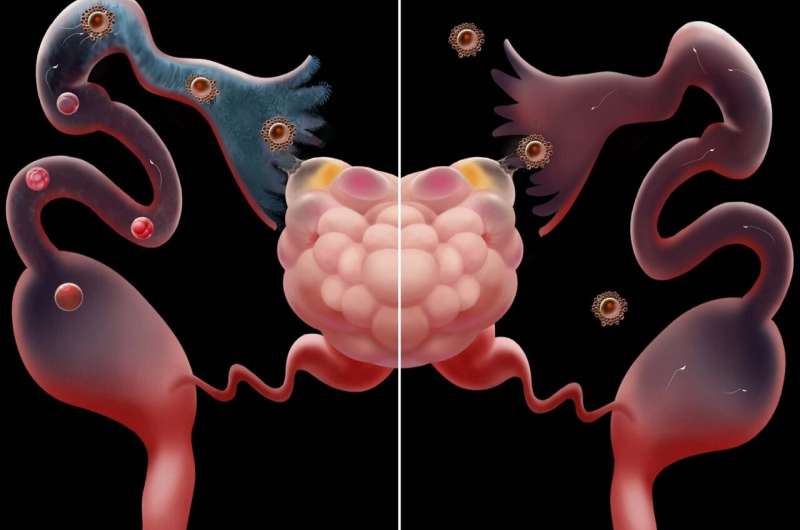Researcher solves longstanding fallopian tube transport debate

Wei Yan, MD, Ph.D., and his research group have solved a longstanding mystery and scientific debate about the mechanism underlying the gamete and embryo transport within the fallopian tube. Using a mouse model that lacked motile cilia in the oviduct, Dr. Yan's group demonstrated that motile cilia in the very distal end of the fallopian tube, called infundibulum, are essential for oocyte pickup. Disruptions of the ciliary structure and/or beating patterns lead to failure in oocyte pickup, and consequently, a loss of female fertility. Interestingly, motile cilia in other parts of the oviduct can facilitate sperm and embryo transport but are dispensable for female fertility. This is a critical finding because disrupted transport function is known to lead to female infertility and ectopic pregnancy. The research finding was published today in the Proceedings of the National Academy of Sciences (PNAS).
"We are very excited about solving this longstanding mystery," said Dr. Yan, "It is now clear that both motile cilia and smooth muscle participate in the transport function, and motile cilia are required for egg pickup, whereas smooth muscle contraction is more important for sperm and embryo transport."
The fallopian tube connects the ovary to the uterus and plays an essential role in female fertility. Functions of the fallopian tube include picking up and transporting ovulated eggs to the fertilization site within the tube, called ampulla, where eggs meet sperm that manage to arrive. Once an egg is fertilized, the early embryo has to be transported from the fallopian tube to the uterine cavity for implantation and the subsequent development.
These functions are achieved by the three major cell types in the fallopian tube: multiciliate cells, secretory cells and smooth muscle cells. Since both motile cilia beating and smooth muscle contraction can move objects, the arguments over which cell type controls the transport function have been ongoing for decades. Some scientists believe that it is the cilia beating that propels the gametes and early embryos, but others think that the rhythmic contraction of smooth muscle drives the movement. Knowing the mechanism underlying the gamete and embryo transport within the fallopian tube is critical because disrupted transport function is known to lead to female infertility and ectopic pregnancy.
"Knowledge derived from the present study helps us understand the causes of female infertility and ectopic pregnancy, and the molecules essential for motile cilial functions represent a good target for developing nonhormonal female contraceptives," added Yan.
Dr. Yan's research focuses on development of non-hormonal contraceptives, genetic and epigenetic control of fertility, as well as epigenetic contribution of gametes (sperm and eggs) to fertilization, early embryonic development and adulthood health.
More information: Shuiqiao Yuan el al., "Oviductal motile cilia are essential for oocyte pickup but dispensable for sperm and embryo transport," PNAS (2021). www.pnas.org/cgi/doi/10.1073/pnas.2102940118




















